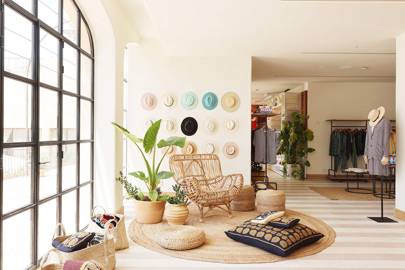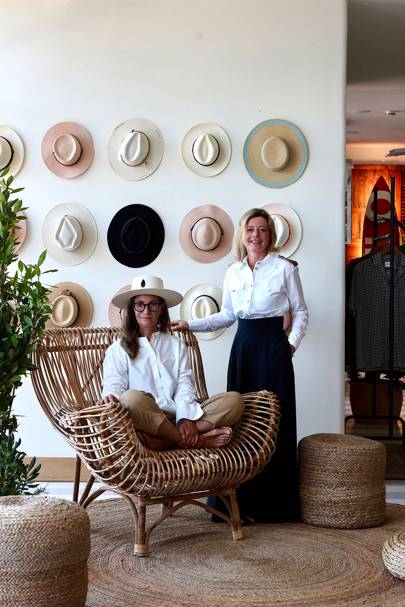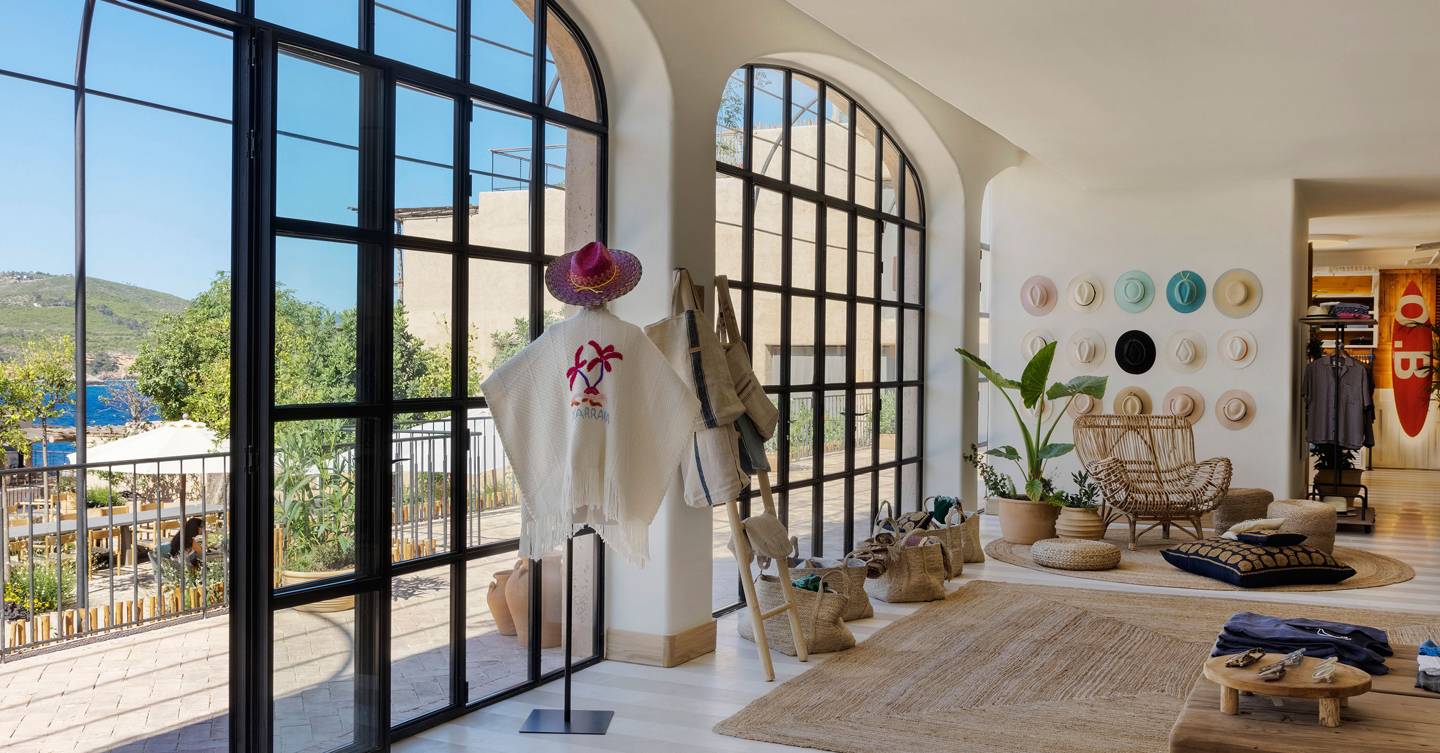It all started one miserable grey day last October. London was in lockdown again, fashion had ground to a halt, the world was struggling with the shock of Covid. I met my friend, the Vogue fashion director Daniela Agnelli, for a drizzly walk in the park and we discussed where we were at. Fashion, at least fashion at the maddeningly consumptive pace it had become, made no sense anymore. The shows, the travel, the seemingly endless collections of ready to wear, couture, cruise – what were they all for now?
Make no mistake, Daniela and I have had gilded lives as fashion editors. For over a decade we took the biannual fashion tour from New York to London, Milan and Paris. For eight weeks a year every one of those show days was packed with catwalk events in ever more lavish locations, and breakfasts, lunches and dinners in the cities’ most glamorous restaurants. As Editor in Chief of Sunday Times Style magazine and latterly Harrods magazine, I have danced with Beyonce in Donatella’s Milanese townhouse, partied with Tom Ford in a rose petal strewn castle, accompanied Gigi Hadid to Alexander Wang’s NY loft and feasted on countless bowls of risotto Milanese. It has been a blizzard of glamour, a whirlwind of social events and a packed calendar of travel – when the ready to wear shows were not enough, we followed Dior to Morocco, Chanel to Havana and Louis Vuitton to Tokyo. It seemed like everything was getting faster and faster, there were more and more collections and products to build stories of desirability around, so more and more people around the world would buy, buy, buy, consume, consume, consume.
And then last March it all stopped. I decided to count the cost by taking a course in sustainability at Cambridge university (more on this later – it’s open to all and I cannot recommend it more highly). Daniela too, had her own moment of pause, which is how we find ourselves now, on the edge of one of the Balearics’ most beautiful bays, as part of Six Senses Ibiza, this summer’s coolest new resort. Within the resort we have curated a new kind of shop: one that tells the story of fashion and sustainability. In fact we are reluctant to call it a shop – it’s more of a live magazine (albeit one that you can buy everything in).
It’s called ‘Agora’, after the ancient Greek word for marketplace. In those times, people would visit the marketplace as much to hear the news, meet each other, swap stories and find out what was going on, as much as buy what they needed. We want people to visit our store as much to hear the stories behind our product, as buy the clothes. Because all the brands and products we have curated come with beautiful stories attached: how they have come to be there, the mindful way the materials, travel and handiwork has been valued and supplied.
There are shawls woven from rural workers in Uruguay: work that allows the women to stay in the countryside and not migrate into towns looking for jobs. There are block printed shirts from communities in India who have perfected the craft through centuries but were in danger of losing their livelihood. There are CDLP swim shorts made from recycled plastic waste, an Iris Ven Herpen couture dress inspired by a scholarly book on the future potential of mushrooms, biodegradable shoes invented by Camila Skovgaard, one of the noughties’ most prolific designers. There are no plastic buttons, just coconut ones, jewellery made from recycled gold, one-off vintage pieces with fashion history behind them, upcycled kimonos and ‘peace silk’ slips.

As our story came together we realised fashion and sustainability is a story that can be told in four chapters. Recycle (either upcycling old or leftover fabric, or using the new future facing fabrics that are made out of recycled plastic waste: Econyl, Lyocell and Tencel to name three), Restore, which is of course about mending, but also about preserving the ancient crafts and artisans that have supported communities around the world. Reduce is about us the consumers, buying less but buying better. And for rent and resale we came up with a Cinderella room concept: It’s Ibiza which means there’s a party, and you may not have packed your ball gown. So why not rent one instead?
Fashion is the fourth largest industry in the world for environmental damage. The era of mass consumerism that started in the 1950s and birthed plastics, overproduction, excessive global travel, and an insupportable burning of fossil fuels, had been fashion’s biggest driver. But on the flip side fashion is a riot of creativity and design, a celebration of personality joy, confidence and identity. We both love fashion – we didn’t want to walk away from it. Instead, we wondered if we could change the idea of what is desirable. If we could redefine luxury, as moving through the world in as frictionless way as possible. Taking, but at the same time giving back.
As we put the store together we learned the differences in sustainability, admiring new brands who were building innovative business models (like BITE, Another Tomorrow, Otiumberg), to older brands that were looking to re-engineer their supply chains and their place in the world (Temperley, La Double J, Orlebar Brown), to local Ibicencan brands whose work supports the island on which we found ourselves (Of Origin, Aho hats, Temple Jewels).

Honestly we had never imagined ourselves as shopkeepers, but that’s what we have become. The launch of Six Senses Ibiza, a resort dedicated to sustainability, found its audience immediately and almost overnight we had the fast set booking in: Alexa Chung, Lily Cole, Liya Kebede, Jordan Barrett, Loyle Carner, Kate Moss and Sadie Frost have all visited. When guests arrive they discover no plastic on site, a largely vegetarian menu supplied by our local farm, a hedgehog sanctuary and a chicken hotel. This winter, the chickens are also getting a gym.
And they also discover Agora. For those who cannot visit, we are telling our stories on our instagram handle @agora.ibiza. We would love to hear from you, and find your solutions, the brands and products you think are making a difference. Please join our community and conversation.
There is an urgency to all this. Environmental catastrophe is heading towards us, if the fires in America’s north west, Siberia – and even this month’s flash floods in the UK – are anything to go by. The arctic cap is melting and unless we start to consume in a more mindful manner, to pay a little bit more for something that will last us a lifetime, that has been manufactured with its materials, supply chain and community in mind, the consequences are unthinkable. For all of us that means buying less and buying better. Choosing pieces you can hand on heart know you will wear a minimum of 30 times, whatever your budget. Asking where the fabrics come from, what factories garments were made in, what community the money you are spending goes to support. Renting and resale is another great solution – buy from Depop, Ebay or Vestiaire or any of those great second hand sites because then you know you are not taking anything new from the world. Got a party or a wedding? Why not rent something instead – MyWardrobe HQ have glamorous gowns for just £30 a night. The fashion industry is slowly waking up. But as consumers we have the power to supercharge that change. It’s in our hands.
Five tips for sustainable living:
- Buy linen not cotton. Linen comes from the flax plant, which requires little water and can grow in poor ground. Across its lifetime a linen shirt uses 6.4litres of water, compared to a cotton one which uses 2,700
- Check your swimwear material. There are amazing companies like CDLP, All Sisters and Apnee who make all their swimwear from recycled ocean plastic waste, at no extra cost. Plus these fabrics are themselves entirely recyclable.
- Leather: must you? Pineapple leather, mushroom leather, even recycled plastic leather are the new future oriented materials. And they look and feel good.
- Look for peace silk or vegan silk. It’s made from silk worms who do not die in the process of harvesting the silk. Instead the cocoon is carefully opened and the silkworm is allowed to transform and live as a butterfly.
- Educate yourself. Look into sustainability courses. It’s expensive, but I learned so much. But you don’t have to pay – websites live Fashion Revolution and the Ellen MacArthur Foundation have resources on their website free to download. Meanwhile, many of the people on the course I took were being sponsored by the companies they worked for. Speak to your HR department!
